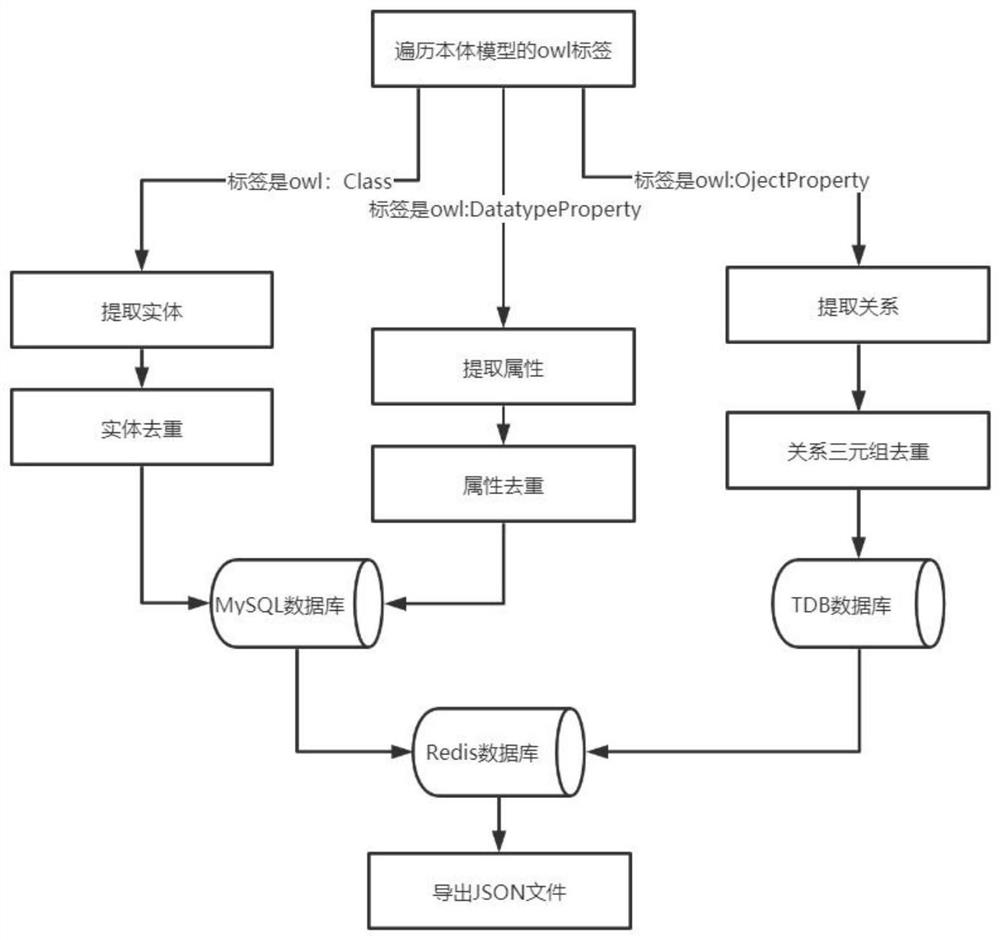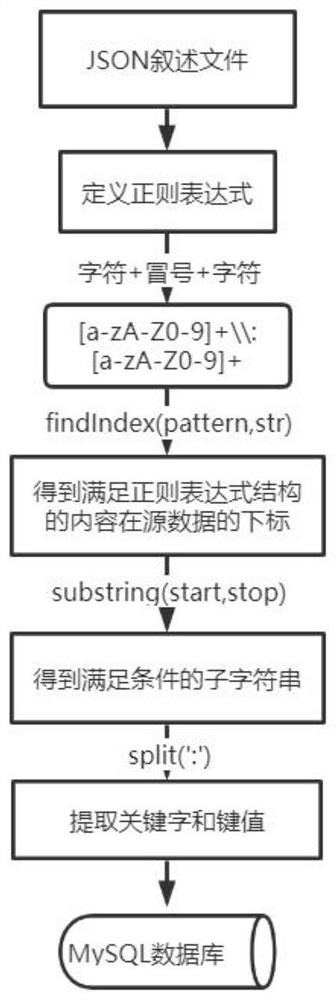Ontology fusion preprocessing method for multi-source heterogeneous resources
A multi-source heterogeneous and ontology technology, applied in the field of computer services, can solve problems such as inability to model, and achieve the effect of improving extraction efficiency
- Summary
- Abstract
- Description
- Claims
- Application Information
AI Technical Summary
Problems solved by technology
Method used
Image
Examples
specific Embodiment approach 1
[0053] Specific implementation mode 1. This implementation mode provides a method for converting ontology modeling into JSON description, such as figure 2 As shown, the method includes the following steps:
[0054] Step S1, extracting entity concepts in the ontology model:
[0055] This step is mainly aimed at the entity concept in the ontology model, and the ontology model is essentially a graph structure, which satisfies the data structure of the graph. Traverse all the tags in the ontology model, filter out the owl:Class tag, and extract the entity concept at the same time, and store it in the Entity table of the relational database MySQL. According to the concept name of the stored entity, it is sorted according to the GBK encoding sequence, and duplicate entities are removed.
[0056] Step S2, extracting relational concepts in the ontology model:
[0057] This step is mainly aimed at the relationship concepts in the ontology model. Traversing all the tags in the onto...
specific Embodiment approach 2
[0062] Specific Embodiment 2. This embodiment provides a grammatical structure definition method for uniform fusion of heterogeneous (semi) structured data, such as image 3 As shown, the method includes the following steps:
[0063] Step S1, finding the obvious structure of the data to be obtained:
[0064] Heterogeneous (semi) structured data is chaotic, but it is also necessary to look for potential laws. The present invention uses regular expression matching rules and proposes two matching methods. The first is "character + colon + character" represented by '[a-zA-Z0-9]+\\:[a-zA-Z0-9]+'; the second is "character + equal sign + character "Represented by '[a-zA-Z0-9]+\\=[a-zA-Z0-9]+'.
[0065] Step S2, return the subscript of the content satisfying the regular expression structure in the source data:
[0066] In order to extract the data that satisfies the regular expression in step S1, use the findIndex(pattern, str) method to obtain the subscript of the matching string,...
specific Embodiment approach 3
[0084] Specific implementation mode three: Figure 5 Describes the ontology model of the faculty. Assistant_Professor, Staff_Member, Professor, Associate_Professor, and Staff_Member are subclasses of Academic_Staff_Member.
[0085] The steps of converting ontology modeling into JSON description are as follows: first step, extract the entity concept in the model, delete the label as owl:Class, extract the entities as Course, Literal, Professor, Assistant_Professor, Staff_Member, Academic_Staff_Member and Staff_Member, and set The above concepts are stored in the Entity table of Mysql. The second step is to extract the relationship concept in the model, delete the label as owl:ObjectProperty, and take out (Course, involves, Academic_Staff_Member), (staff_Member, id, Literal) and (staff_Member, phone, Literal) triples and store them in TDB database, and these relationships do not declare reflexivity, etc., do not need to be marked. The third step is to extract the attribute co...
PUM
 Login to View More
Login to View More Abstract
Description
Claims
Application Information
 Login to View More
Login to View More - R&D
- Intellectual Property
- Life Sciences
- Materials
- Tech Scout
- Unparalleled Data Quality
- Higher Quality Content
- 60% Fewer Hallucinations
Browse by: Latest US Patents, China's latest patents, Technical Efficacy Thesaurus, Application Domain, Technology Topic, Popular Technical Reports.
© 2025 PatSnap. All rights reserved.Legal|Privacy policy|Modern Slavery Act Transparency Statement|Sitemap|About US| Contact US: help@patsnap.com



